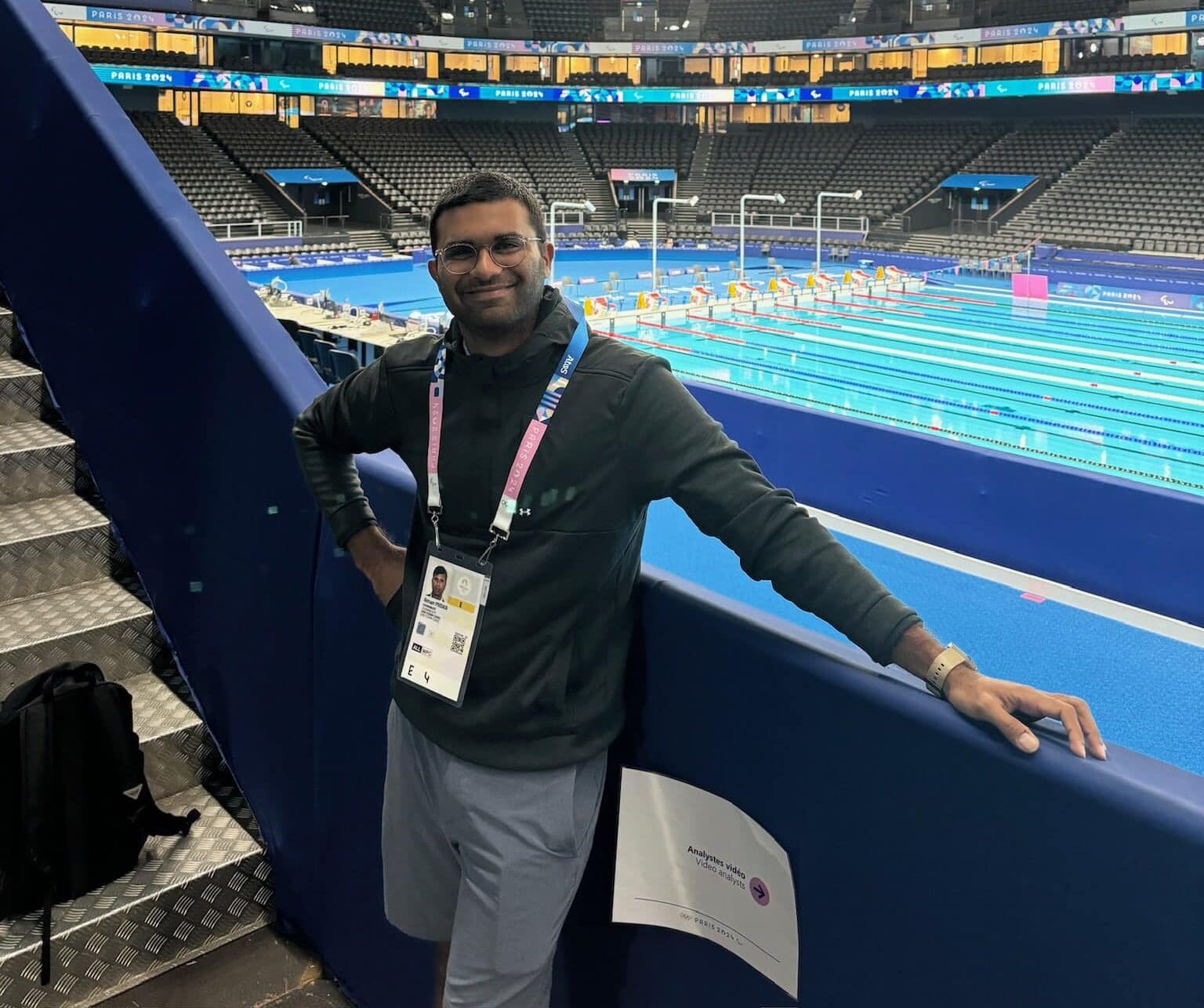CCI PhD Candidate Uses Platform To Introduce Students To Adaptive Sports

When College of Communication and Information doctoral student Aman Misra invited Indian para-badminton star Manasi Joshi to his class, he could not have predicted the response they got.
Off the badminton court, Joshi is an activist and spends her time introducing and expanding disability awareness around the world. Misra had the students research Joshi and prepare a few questions for her ahead of class.
Once class started, it became more of a mock press conference, Misra said. Students eagerly raised their hands in hopes to get their questions answered from a patient Joshi.
As a sports journalist and individual with an acquired disability, Misra has used his platform as a graduate student teacher at the School of Journalism and Media to expose aspiring sports journalists to adaptive sports.
This is why he represented the school in Paris this summer as part of a partnership with USA TODAY to have CCI students cover the 2024 Paralympic Games. Misra, who has experience working for ESPN-India, the Indian Express, and The Telegraph, helped advise students while in Paris. Misra, as a person with a hearing disability, has training in covering sporting events for people with disabilities.
“When Dr. Whiteside kindly called me to her office letting me know about the Paris trip, some of this work felt validated,” Misra said. “Disability sports are no longer simply limited to once in four years but are round-the-clock, 365 days per year. Athletes like Joshi are reflective of that in their intersectional roles. Students must realize that these roles are no longer niche but can potentially turn these into careers in the long run.”
The 2024 CCI Graduate Teaching Award recipient said he cannot wait to share his experiences in Paris with his students this semester and hopes the nine students who covered the Games have seen that disability sport should be taken seriously.
One story he hopes to share with his students is traveling to the Velodrome on the outskirts of Paris to cover American track cyclists Bryan Larson and Elouan Gardon. He also had a cool moment chatting with the head coach of the US cycling program, Sarah Hammer-Kroening, who in a previous career won four Olympic medals as a cyclist.
He also enjoyed watching the students’ enthusiasm for covering adaptive sports and the work they put into preparing for and executing interviews with the athletes. In less than a week, students wrote more than thirty articles, produced more than fifteen videos for social media, and photographed several events for USA TODAY and other papers within the network.
“These student reporters reminded me why I got into the journalism game in the first place,” Misra said.
Intersection of sports and disability
Misra started losing his hearing at age thirteen when he was a swimmer in high school.
This led him to eventually quit his high school team to pursue individual sports such as golf because he didn’t feel supported enough as a person with an acquired disability in swimming.
“Golf was a refuge away from the prying, judging lights of competitive swimming,” Misra said. “I didn’t have anything to prove to anyone while coping with my growing disability, which continues to worsen to this day.”
These experiences sparked his interest in researching media perception of disability.
His doctoral research focuses specifically on media perception of sports for persons with disabilities and public memory in sport. His dissertation proposes combining both media perception of disability sport and public memory to examine anniversary coverage of men’s professional golf in the United States.
“Sport media perception of people with disabilities has gradually improved with each edition of the Paralympics,” Misra said. “Social media coverage in my home country of India, for example, has turned it into a nationwide discussion.”
Misra believes there is still room for improvement in media coverage of athletes with disabilities, and that journalism educators can help influence future generations of journalists’ perceptions of adaptive sports and athletes.
For example, journalists should focus on the athletic ability of the athletes rather than their disabilities. Also, Misra said, providing students hands-on opportunities working with para-athletes goes a long way in changing future sports journalists’ perception of what is possible within the realm of sports journalism.
“I can already see the students sharing their experiences at the Games with their fellow classmates and making it a point to follow up on post Paralympic activities of the athletes which they took great care to cover for USA Today Sports,” Misra said.
CCI PhD Candidate Uses Platform To Introduce Students To Adaptive Sports written by Ernest Rollins and originally published on the College of Communication & Information site.